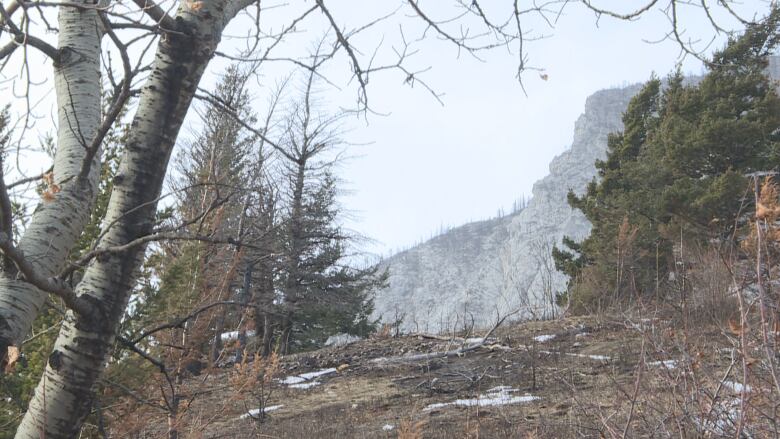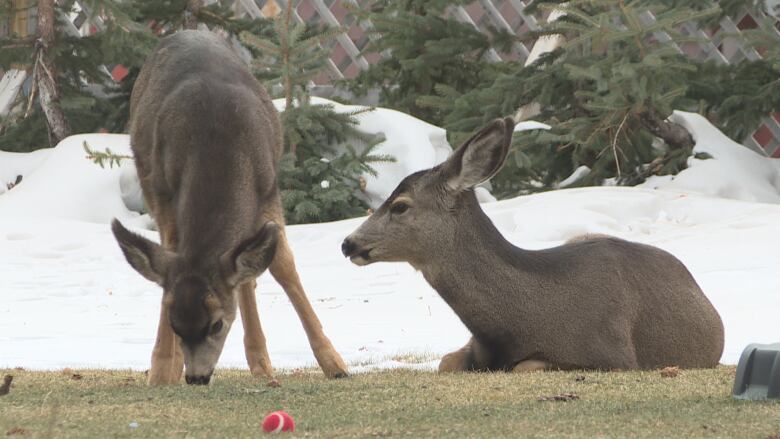Birdwatchers gather in Waterton to spot signs of recovery after devastating wildfire
Volunteers joined 41st annual bird count to see which species have returned

Avid birdwatchers gathered in WatertonLakes National Park earlier this month to discover how many of their feathered friends returned to the park following a devastating wildfire that swept through the area in September.
The 41stAnnual Waterton Christmas Bird Count is part of one of the longest running citizen-science projects in Canada.
"For the park, it's a snapshot of what's happening with bird populations from year to year. When you have that many years of data, you get a sense of what's going on," said Dianne Pachal, volunteer coordinator for the count and public outreach education officer for the park.

The tradition of Christmas bird counts began in Canada in 1900, and now happen in 2,000 locations in the Western Hemisphere, according to Bird Studies Canada.
Thirty-seven different bird species reside in the park year-round, Pachalsaid.
On Dec. 15, volunteers spread out through various parts of the park to record the different species of birds seen, and how many.
Last year's count turned up 17 different species.
Park staff and volunteers were looking forward to seeing the first signs of recovery after the Kenow Fire.

Dennis Madsen, resource conservation manager for Waterton Lakes National Park, said this fire was intense, blasting out embers that were carried ahead by the wind, igniting dry grass and likely trapping some wildlifethatwould have been surrounded by flames on both sides.
"Certainly in this fire we would have lost some animals," said Madsen.
"Ordinarily, fires don't move as quickly as this fire did. Itcovered over 20 kilometres in just over four hours."
Some areas of the park are still closed birdwatcherswere restricted from delving too deep into the forest, due to safety hazards.

But, fires are part of the natural life cycle of a forest, and staff have already seen some animals returning to the area.
"It's not a bad thing," Madsen said.
"In fact, it's essential for different species on the landscape, it creates diversity, so you get more species, more habitats for different kinds of animals. It's a natural process."
Some of the first birds that are likely to return to the area are cavity nesters, like woodpeckers, who tuck away in small holes created by the blaze and dine on insects that crop up as new growth starts to take hold.
Raptors, like hawks and eagles, also benefit, preying on small birds that can't find cover as the shrubbery has burned away.

Volunteer Pat Lucas of the Crowsnest Conservation Society said it's exciting to see how the ecosystem changes over the years as birds move back in after a fire.
"Everything will adapt and it will come back," she said.
The count's results will likely be released in early 2018.
- MORE CALGARY NEWS |Banff wolves may soon have meal they haven't tasted in 140 years: wild bison
- MORE CALGARY NEWS |How birds stay warm through Canada's cold winters
With files from Mario de Ciccio












_(720p).jpg)


 OFFICIAL HD MUSIC VIDEO.jpg)
.jpg)



























































































